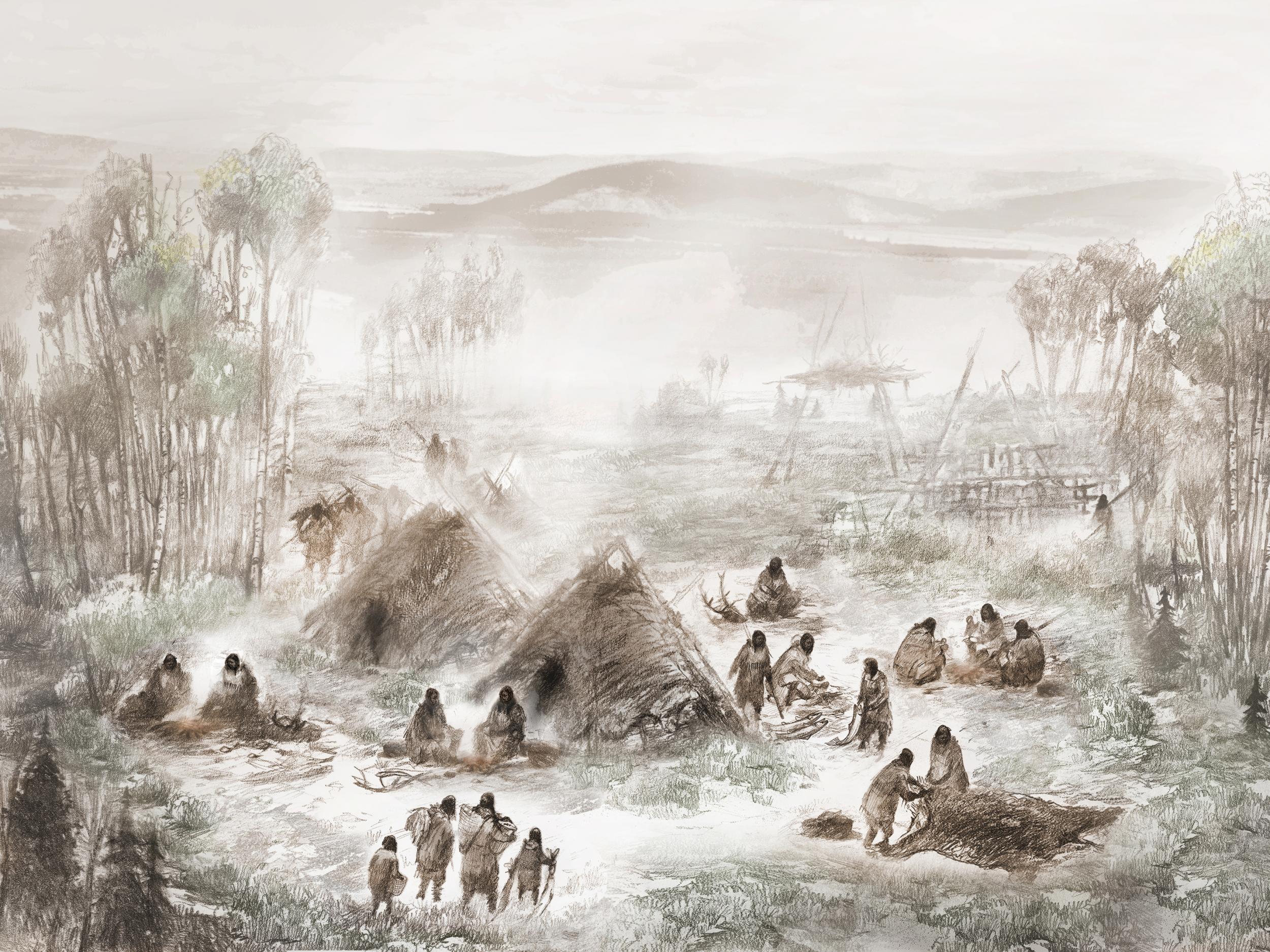The Independent's journalism is supported by our readers. When you purchase through links on our site, we may earn commission.
Evidence of first ever humans to colonise North America found by scientists
Genetic analysis of ancient Alaskan child suggests the region was settled by people crossing from Asia 25,000 years ago

Scientists investigating the DNA of a prehistoric human child have found it belongs to the earliest colonisers of the Americas ever discovered.
The findings suggest Alaska was likely populated 25,000 years ago, 10,000 years earlier than the time of arrival suggested by many archaeologists.
“It represents the oldest lineage of Native Americans so far discovered,” said Professor Eske Willerslev, an evolutionary geneticist at the University of Cambridge who co-authored the study documenting the findings.
“It’s the fact that this population is older than all other known Native American groups that makes it very important in addressing how the Americas were first populated,” he said.
The findings were published in the journal Nature.
Scientists uncover ancient human remains
Show all 3The scientists have called this new population the Ancient Beringians, and so far they are only known from the single individual they studied.
Known as "Xach'itee'aanenh T'eede Gaay", or sunrise girl-child, by the local indigenous people, the remains of the Ancient Beringian girl provided Professor Willerslev and his colleagues extensive insight into American prehistory.
The child herself lived 11,500 years ago at a site known as Upward Sun River in Alaska.
However, comparison of the number of genetic similarities and differences with those of other ancient and contemporary humans allowed the scientists to roughly time the movement of ancient people from Asia to North America to a much earlier date.
Their analysis suggested Ancient Beringians and the ancestors of other Native Americans all descend from a single founding population that split decisively from East Asians around 25,000 years ago.
"It would be difficult to overstate the importance of this newly revealed people to our understanding of how ancient populations came to inhabit the Americas," said Dr Ben Potter, an anthropologist at the University of Alaska Fairbanks and one of the lead authors of the study.
"This new information will allow us a more accurate picture of Native American prehistory. It is markedly more complex than we thought."
Contrary to the research team’s expectations, the ancient girl’s DNA did not match the genetic profile of other ancient Native American people from the north.
This suggested the Ancient Beringian population split from other Native Americans 20,000 years ago when the latter moved south along the Pacific coast.
Once further down the coast, Native Americans split into two distinct genetic groups, one in the north and one in the south.
The northern group then moved back further north, pushing out the Ancient Beringians.
As for the modern indigenous inhabitants of Alaska, it is unclear exactly what connection they have with these ancient people.
"These findings create opportunities for Alaska native people to gain new knowledge about their own connections to both the northern Native American and Ancient Beringian people," said Dr Potter.
Professor Willerslev said to the best of their knowledge Alaskan Native Americans do not directly descend from the Ancient Beringians, instead deriving their genes from the northern population of Native Americans who returned to the region.
“However, that said few Natives from Alaska have been sequenced so far, and who knows if some of them survived? Time will tell,” he said.
Subscribe to Independent Premium to bookmark this article
Want to bookmark your favourite articles and stories to read or reference later? Start your Independent Premium subscription today.

Join our commenting forum
Join thought-provoking conversations, follow other Independent readers and see their replies